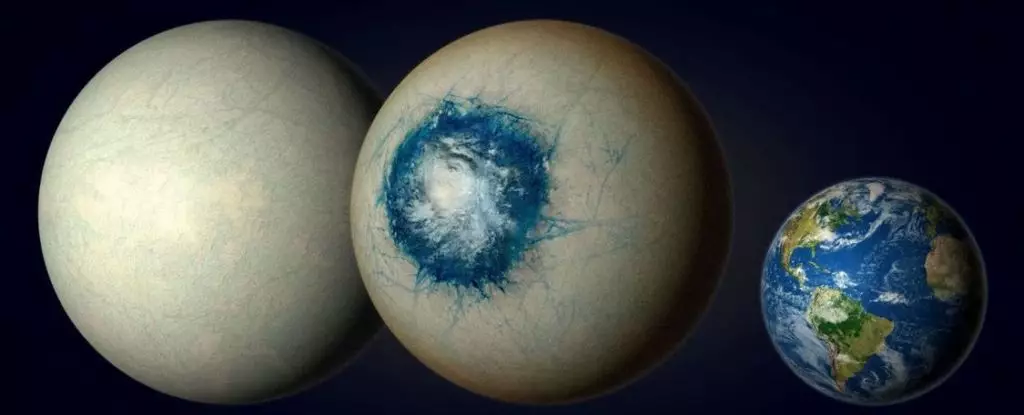In the vast expanse of the universe, the discovery of exoplanets has always fascinated astronomers and space enthusiasts alike. Among these cosmic neighbors, LHS-1140b stands out as one of the most promising candidates for hosting life outside of our Solar System. Recently, new revelations have added to the intrigue surrounding this alien world, painting a picture of a bizarre and captivating landscape waiting to be explored.
Unveiling the ‘Eyeball’ Planet Phenomenon
The unique characteristics of LHS-1140b set it apart from other exoplanets. Scientists have identified this distant world as a potential ‘eyeball’ planet, with a global ocean covered in ice and a remarkable iris-like region spanning thousands of kilometers. This peculiar feature, akin to an eye staring at its host star, captures the imagination and underscores the diverse and unconventional nature of celestial bodies beyond our Solar System.
A Deep Dive into LHS-1140b’s Atmospheric Secrets
To unravel the mysteries shrouding LHS-1140b, researchers have turned their attention to the planet’s atmosphere. By leveraging the advanced capabilities of instruments like the James Webb Space Telescope (JWST), scientists have begun to explore the chemical composition of this alien world. Initial findings suggest the presence of nitrogen in the atmosphere, hinting at a secondary atmospheric layer that formed after the planet’s inception. This revelation opens up a realm of possibilities for understanding the conditions that may exist on LHS-1140b.
While the proximity of LHS-1140b to its host star places it in the habitable zone, where conditions may support liquid water on the surface, it is essential to delve deeper to determine if the planet could harbor life. Tidal locking, a phenomenon where one side of the planet constantly faces the star, adds a layer of complexity to the potential habitability of LHS-1140b. Despite these challenges, the tantalizing prospect of discovering an exotic alien ecosystem on this distant world fuels the curiosity and determination of scientists seeking to unlock its secrets.
As we peer into the vast expanse of the cosmos, the quest to understand the mysteries of exoplanets like LHS-1140b remains a driving force in astronomical research. The technological advancements and scientific breakthroughs that continue to shape our understanding of the universe offer a glimpse into the limitless possibilities that lie beyond our own planetary neighborhood. With each discovery and revelation, our perception of the cosmos is expanded, inviting us to marvel at the wonders of distant worlds and contemplate the vastness of the unknown.


Leave a Reply